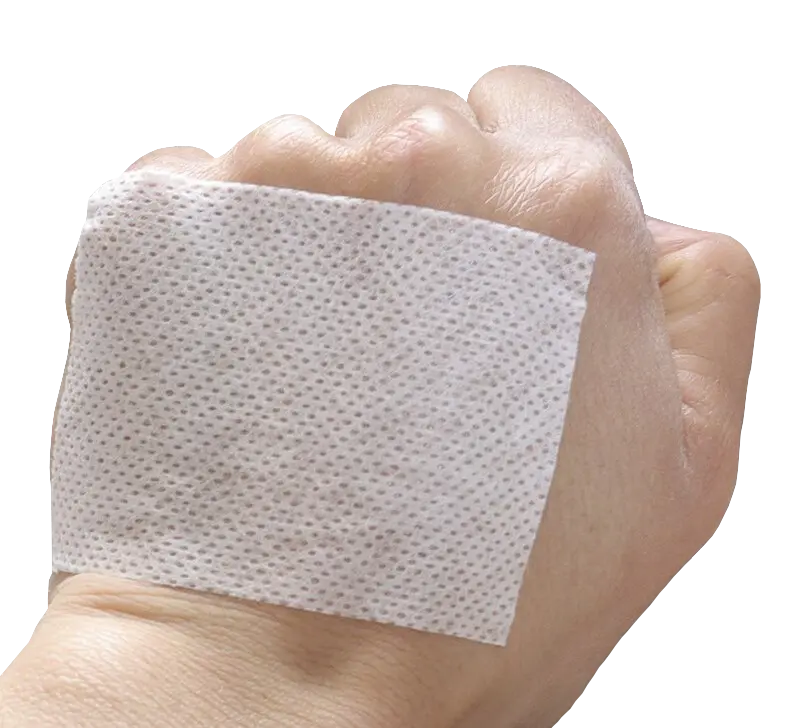Fragile Skin Needs Special Care
Medical tapes play a crucial role in healthcare, widely used for securing surgical materials, wound dressings, and IV lines. They greatly facilitate medical procedures and improve patient comfort. However, clinical experience shows that improper use of medical tapes may cause skin damage, such as epidermal stripping, tension injuries, or skin maceration. Choosing the right medical tape is essential to minimizing these risks.
Why Can Medical Tapes Damage the Skin?
Medical tapes consist of two main components: backing material and adhesive, each of which affects the skin differently. The following are common causes of skin damage due to medical tapes:
- Epidermal Stripping: Strong adhesives may pull off the outer skin layers, especially in elderly patients and newborns with delicate skin.
- Tension Injuries: Excessive stretching of the tape can create mechanical stress, leading to irritation and damage.
- Skin Maceration: Poorly breathable tapes may trap moisture, increasing the risk of infections.
To ensure patient safety and comfort, the choice of medical tape should be based on skin condition and clinical needs.
Skin Care Needs for Fragile Skin
Skin conditions vary based on age, health status, and medical requirements. The following groups are particularly vulnerable and require extra care when selecting medical tapes:
Elderly Patients
As skin ages, it becomes thinner, loses collagen, and becomes more fragile. Loose connections between the epidermis and dermis make the skin prone to damage from adhesives. Elderly patients should use gentle, easy-to-remove tapes to reduce the risk of epidermal stripping.
Newborns
Newborns have underdeveloped skin with an immature stratum corneum, making them highly sensitive to adhesives. Excessive adhesion may damage the skin barrier, causing pain and potential infections. Medical tapes for newborns should be hypoallergenic, gently adhesive, and highly breathable.
Post-Surgical and Long-Term Tape Users
Patients recovering from surgery or those requiring long-term tape application face an increased risk of skin damage due to frequent tape changes. Low-irritation, repositionable, and skin-friendly tapes are ideal for these cases.
Medilink Recommends: Best Medical Tapes for Fragile Skin
Medilink is dedicated to providing high-quality, hypoallergenic medical tapes designed to minimize skin irritation and damage.

1. Medilink™ Non-Woven Medical Tape (MDK-2476)
Features:
- Uses silicone adhesive, ensuring gentle adhesion while minimizing skin stripping.
- Breathable non-woven backing reduces skin maceration risks.
- Repositionable without losing adhesion, making it ideal for post-surgical care and long-term use.
- Suitable for elderly patients, newborns, and sensitive skin users.
Best For:
- Securing wound dressings post-surgery.
- Patients requiring frequent tape changes.
- Reducing discomfort for fragile skin.
2. Medilink™ Double-Sided Medical Tape (MDK-2477)
Features:
- Dual-layer adhesion: One side features silicone adhesive for gentle skin contact, while the other side uses a medical-grade acrylic adhesive for strong bonding with medical devices.
- High adhesive strength: Ensures secure attachment to various medical materials.
- Hypoallergenic formulation: Tested for skin safety, making it suitable for sensitive users.
Best For:
- Fixing drainage tubes and catheters post-surgery.
- Long-term medical device attachment (e.g., insulin pumps, electrodes).
- Secure adhesion for various medical applications.
How to Properly Use Medical Tape to Prevent Skin Damage
Even when using hypoallergenic medical tapes, correct application and removal techniques are key to preventing skin damage.
1. Ensure Skin is Clean and Dry
Before applying medical tape, remove any moisture, oil, or residue to maintain optimal adhesion.
2. Apply Tape Properly
- Avoid excessive tension to prevent mechanical stress on the skin.
- Apply tape in the direction of natural skin movement to reduce the risk of pulling.
3. Remove Tape Safely
- Peel slowly: Gently remove the tape along the skin surface instead of pulling it upward.
- Use removal aids: Apply warm water, medical adhesive removers, or petroleum jelly to soften the adhesive and enhance comfort.
Medilink’s Commitment: Advancing Healthcare with Technology
At Medilink, we uphold the philosophy of “Technology Improves Healthcare” by continuously developing innovative products that enhance patient comfort and medical efficiency.
Our medical tapes are trusted in the industry and fully comply with ISO 13485 international medical device quality management standards, ensuring the highest safety and performance.
Conclusion
For patients with fragile skin, choosing the right medical tape is crucial for preventing irritation and discomfort. Medilink’s hypoallergenic, gentle-adhesion, and breathable medical tapes provide safer and more comfortable solutions for both patients and healthcare professionals.
If you’re interested in Medilink’s medical tapes, feel free to contact us. We offer expert material solutions to support new product developments and enhance healthcare applications.
Sample application
We are a company deeply engaged in the field of orthopaedic products, if you are interested, please click the button below to contact our professional team, we can provide including but not limited to consulting services, sample supply, questions.
